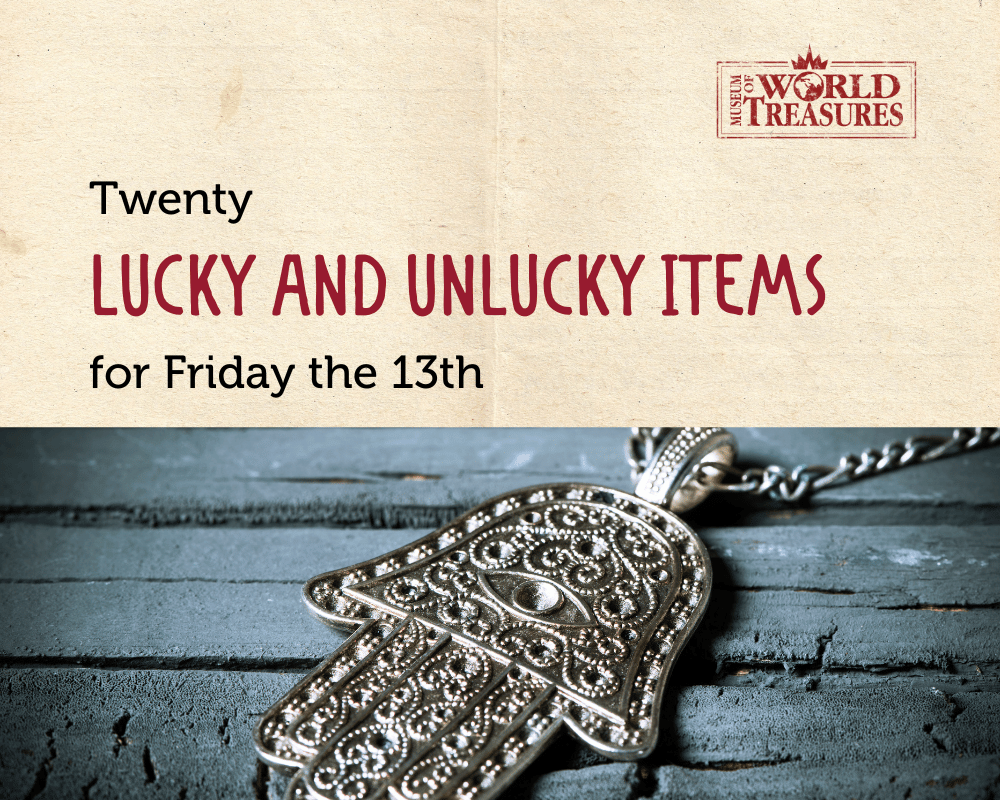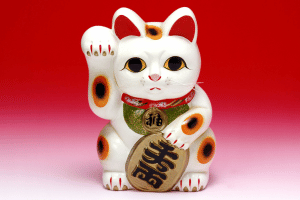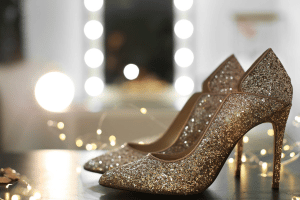20 Lucky and Unlucky Items for Friday the 13th
October 13, 2023

Welcome to our exploration of the fascinating world of superstitions, where beliefs both lucky and unlucky have captured human imagination for centuries. On this unique journey, we'll delve into the origins and stories behind a range of lucky charms and unlucky omens that have shaped cultural traditions across the globe. From the seemingly innocent rabbit's foot to the ever-elusive four-leaf clover, we'll uncover the mystical allure of these items. Then, we'll step into the realm of superstitions that bring fear and misfortune. So, fasten your seatbelts as we navigate through the world of lucky items and their not-so-fortunate counterparts, and discover the stories that have mystified generations.
Interested in experiencing more fun history with us? Check out our Upcoming Events and plan to join us soon!
Good Luck Symbols
-
Rabbit's Foot
Let's begin with one of the most iconic symbols of luck: the rabbit's foot. Despite its cute appearance, this superstition has a dark history. It rose to popularity in 1584 when people would carry a rabbit's foot to spare themselves from arthritis.
The common belief that the rabbit's foot is associated with the Christian holiday Easter is a misconception. But how did this practice begin? Surprisingly, it has roots in the Middle Ages:
- Common criminals would be hanged, and a lucky member of the public would acquire the criminal's severed left hand.
- The commoner would then pickle the left hand for good luck.
- It is thought this practice paved the way for the belief in the rabbit's foot.
Ironically, rabbits were often seen as symbols of evil during the Middle Ages, adding an intriguing layer to this superstition.
-
Four-Leaf Clover
Another well-known symbol of luck is the four-leaf clover. Its origins can be traced back to the Middle Ages when it was considered lucky by many Celtic groups. But this little green leaf had more to offer – it was believed to help people see fairies and ward off evil spirits.
The four-leaf clover's reputation as a harbinger of good fortune can be found in writings dating back to the 1600s, with John Melton noting that finding one meant "finding some good thing."
-
Wishbone
Have you ever participated in the tradition of breaking a wishbone for good luck? The origins of this superstition date back 2,400 years to the Etruscans.

The Etruscans believed that fowls could predict the future, depending on the grains they chose to eat. This unique belief led to the creation of the wishbone tradition.
When the fowl was killed, its collar bone was considered sacred. It would be left to dry in the sun and then, in a circle, the Etruscan people would make a wish as they pulled the bone apart, hoping for good luck.
-
Lucky Dice
Today, it's common to see fuzzy dice hanging from car mirrors, a symbol of luck. This tradition has its roots in World War II.
Pilots during the war would put objects they considered lucky in their aircraft to keep them safe. Many soldiers in the military would keep a pair of dice that seemed particularly good at winning in their planes.
After the war ended, this tradition spread and became a symbol of luck for many people.
-
Dream Catcher
Now, let's explore the mystical world of dream catchers. These intricate designs originated with the Ojibwe people and have since been adopted by many other tribes.
The legend of the dream catcher traces back to Asibaikaashi, also known as the Spider Woman. She played a crucial role as the custodian of Ojibwe infants and adults, weaving magical webs to protect them. As the Ojibwe people spread and expanded their tribe, these dream catchers were believed to have powerful protective powers.
These charms would hang over children's beds, capturing bad dreams and evil spirits that dared to disturb the child's slumber.
-
The White Elephant
Our next item of superstition takes us to the land that is now known as Thailand, where the white elephant was considered an incredibly rare and sacred animal. Harming or killing a white elephant was punishable by death.
Once discovered, these sacred animals were immediately gifted to the reigning monarch of the land. Their rarity and holiness made them highly prized.
-
Hamsa
Our journey continues with the Hamsa, an ancient symbol believed to have its earliest use in Mesopotamia. It's often depicted as an open right hand, a sign of strength that deflects the evil eye.

-
Keys
Keys, which are believed to bring good luck as a gift, have roots in Far Eastern cultures. They were often given as gifts on 21st birthdays, symbolizing that one had reached an age to be a key holder to their family home.
Wearing a key around one's neck is thought to "open" physical, intellectual, or spiritual barriers.
-
Maneki Neko
Commonly thought to have originated in Japan, the Maneki Neko was originally white. Through the development of various spiritual practices like Feng Shui, it adopted different colors.

Famous folklore tells the story of the Maneki Neko's creation during the Edo period. Li Naotaka and his party found shelter in Gotoku-ji Temple, beckoned by a cat. A violent thunderstorm surrounded them, but they remained safe in the temple. In later generations, the cat was immortalized as the Maneki Neko.
-
Pigs
Our journey concludes with the pig, which became popular as a good luck charm in the late 19th and early 20th centuries in various European countries.
The pig is seen as a symbol of prosperity, fertility, and general good luck. It's also associated with wealth, possibly tied to the idea of gluttony that pigs symbolize.
In the Chinese calendar, people born under the year of the pig are thought to be sociable, popular, passionate, and reliable.
Superstitions have the power to shape our beliefs, behaviors, and traditions, both in auspicious and inauspicious ways. As we explore the stories behind these lucky items and unfortunate omens, we gain insight into the rich tapestry of human culture and the enduring influence of beliefs passed down through generations.
Bad Luck Signs
While some items are celebrated as symbols of good luck, others are viewed with suspicion and superstition. Explore the intriguing world of unlucky items that have captured the human imagination for centuries:
-
Broken Mirrors
Superstition surrounding broken mirrors has its origins in ancient Rome. Romans believed that a mirror is not only a reflection of one's physical self but also a window into the soul.
Breaking a mirror was considered damaging the "portal to the soul" and an insult to the gods, resulting in seven years of bad luck. This curious duration was rooted in the belief that the body and soul renew themselves every seven years, and once the renewal was complete, the curse would end.
-
Gifting Someone a Clock
This superstition comes from Eastern Asia, where the phrase "giving a clock" sounds remarkably similar to "sending someone off on their last journey" in Cantonese.

Many believe that gifting a clock is an omen of an early death. Clocks, often associated with the ticking of time, can symbolize the end of one's journey.
-
Horseshoe with Ends Pointed Down
The superstition surrounding horseshoes has deep historical roots, dating back hundreds of years. Some believe that the luck associated with a horseshoe has its origins in the craft of blacksmiths.
While hanging a horseshoe with the open end facing up is seen as a sign of good luck and even as a way to keep the devil at bay, there's an intriguing legend associated with hanging it with the ends pointed down. This practice is thought to be traced back to a blacksmith named Dunstan.
According to the legend, Dunstan was visited by the devil, who asked him to make a new pair of shoes. Dunstan made the shoes and then nailed them to the devil's hooves, causing the devil immense pain and agony. He even chained up the devil, releasing him only on the condition that he would never enter a home with a horseshoe hanging on the wall. In 959 C.E., Dunstan became the Archbishop of Canterbury and was later canonized as Saint Dunstan.
It's believed that hanging a horseshoe upside down brings bad luck because it allows all the good luck to spill out, and some think it prevents the devil from sitting in it.
-
Opening an Umbrella Inside
This superstition has roots in ancient Egypt, where it was believed that opening an umbrella indoors was an insult to the Egyptian sun gods, displeasing them.
Another variation of this superstition specifies that opening an umbrella indoors isn't necessarily bad luck unless it's a black umbrella. Black umbrellas, in particular, are seen as harbingers of misfortune.
-
Chopsticks Sticking Straight up in a Bowl of Rice
Sticking chopsticks upright in a bowl of rice is considered extremely taboo, primarily because it reminds Japanese people of funerals.
At traditional Japanese funerals, a bowl of rice is often left with two chopsticks sticking up in the center as a way to honor the deceased and their ancestors.
-
Ravens
This superstition originates from ancient Greece, where the raven was viewed as an emblem of bad luck and misfortune. Additionally, it was associated with the god Apollo.
The legend goes that Apollo sent a raven to spy on his lover, Coronis. The raven witnessed Coronis' unfaithfulness, and upon its return, delivered the distressing news to Apollo. Out of anger, Apollo turned the raven's feathers black, forever branding it as a bad omen.
-
Saying Macbeth
According to legend, the play Macbeth was cursed from its very conception. Supposedly, a coven of witches put a curse on Shakespeare's work.
The play's first performance was fraught with disaster, as the actor playing Lady Macbeth died suddenly, having mistaken real daggers for prop daggers. This unfortunate incident set the tone for what many believe would be centuries of misfortune.
Even today, the belief persists that saying the word "Macbeth" on a stage or in a performance area would bring the same curse that plagued the play throughout history.
-
Shoes on a Table
This common belief is particularly prevalent in Northern England and has its roots in the coal mining industry. When a miner perished in a colliery accident, their shoes were placed on a table as a sign of respect.

Today, the superstition holds that placing your own shoes on a table is seen as "tempting fate." In the world of theater, some even believe that putting costume shoes on a table can foretell a future bad performance with that character.
-
Spilled Salt
This superstition is rooted in Christianity, with its origin tied to the belief that spilling salt is a sign of bad luck due to the story of Judas Iscariot.
Judas, who betrayed Jesus, is associated with the mishap of spilling salt, leading to its reputation as a symbol of misfortune.
-
Walking through a Ladder
This superstition has its origins in ancient Egypt, where it was believed that the open space between a ladder and a wall was the abode of both good and bad spirits.
It was thought that passing through this space would anger the spirits, resulting in the creation of laws against walking underneath ladders.
Superstitions, whether they bring good luck or bad luck, have a way of captivating our imaginations and traditions. They remind us of the rich tapestry of human culture and how beliefs, both auspicious and inauspicious, have endured through generations.
